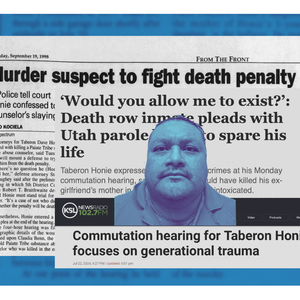
A recent op-ed in the Idaho Statesman highlights a number of difficulties that are a result of historic underspending on capital defense as the state prepares for its first execution since 2012. Idaho’s public defense system is transitioning to statewide oversight as part of an effort to address longstanding inequities in county-funded legal representation. With the consolidation of the public defender system came pay increases for most of Idaho’s public defenders, but many of the highest-paid attorneys took cuts. The American Civil Liberties Union of Idaho said that with these cuts came “mass resignations” of attorneys and support staff, leaving many defendants without access to adequate legal representation. In response to this crisis, Governor Brad Little requested a budget increase of 70%, from just over $50 million to $89 million for the state public defense system for fiscal years 2025 and 2026.
The budget increases to support the public defender system are just one of many factors driving up the cost of pursuing the death penalty in Idaho. The state’s decision to amend its lethal injection protocol and proceed with executions, as well as the creation of a new firing squad chamber in response to recent legislation have also increased death-penalty-related expenditures. Public records reveal that the state spent $150,000 on lethal injection drugs in its efforts to execute Thomas Creech—$50,000 in October 2023 and $100,000 in June 2024. Recent renovations to the F Block unit at the Idaho Maximum Security Institution to create an execution preparation room cost an estimated $313,915, according to IDOC public information officer Sanda Kuzeta-Cerimagic. The renovations to the execution room included imaging, design, and engineering, and are just the first phase of a two-stage renovation. The second stage includes the creation of a secured facility for executions via firing squad, which was adopted as an alternative execution method in 2023. Phase two construction costs are estimated at $952,589, as reported by the Idaho Capital Sun.
All of this underscores the financial strain created by the decisions to seek death sentences and carry out executions in Idaho. Lori Daybell’s trial, which did not ultimately result in a death sentence, cost Fremont and Madison Counties about $2 million. The Idaho Statesman op-ed noted that had Daybell’s case been held in neighboring Clark County, the amount of money would have required nearly a quarter of the county’s total operating budget.
Cost studies from multiple states consistently show that capital cases cost significantly more than non-capital cases, for reasons including longer trials, increased security, and appeals. A 2017 independent study in Oklahoma estimated that capital cases in the state cost 3.2 times more than non-capital cases on average. In their review of 15 different state studies from across the country, the Oklahoma Death Penalty Review Commission found that nationally, seeking the death penalty imposes an average of approximately $700,000 more in costs than not seeking death.
The financial strain on Idaho’s public defense system highlights a critical disconnect between the state’s priorities and resources. While the statewide public defender system struggles to meet the constitutional rights of indigent defendants, millions are spent on capital cases and the death penalty in a state that has not carried out an execution since 2012.
Bryan Clark, Pay now or pay more later: ACLU warns underfunding plagues Idaho’s public defense, Idaho Statesman, January 13, 2025; Sarah Cutler, Idaho Supreme Court must intervene in new, ‘disastrous’ public defense reform, ACLU says, Idaho Statesman, January 7, 2025.
Costs
Sep 11, 2024
